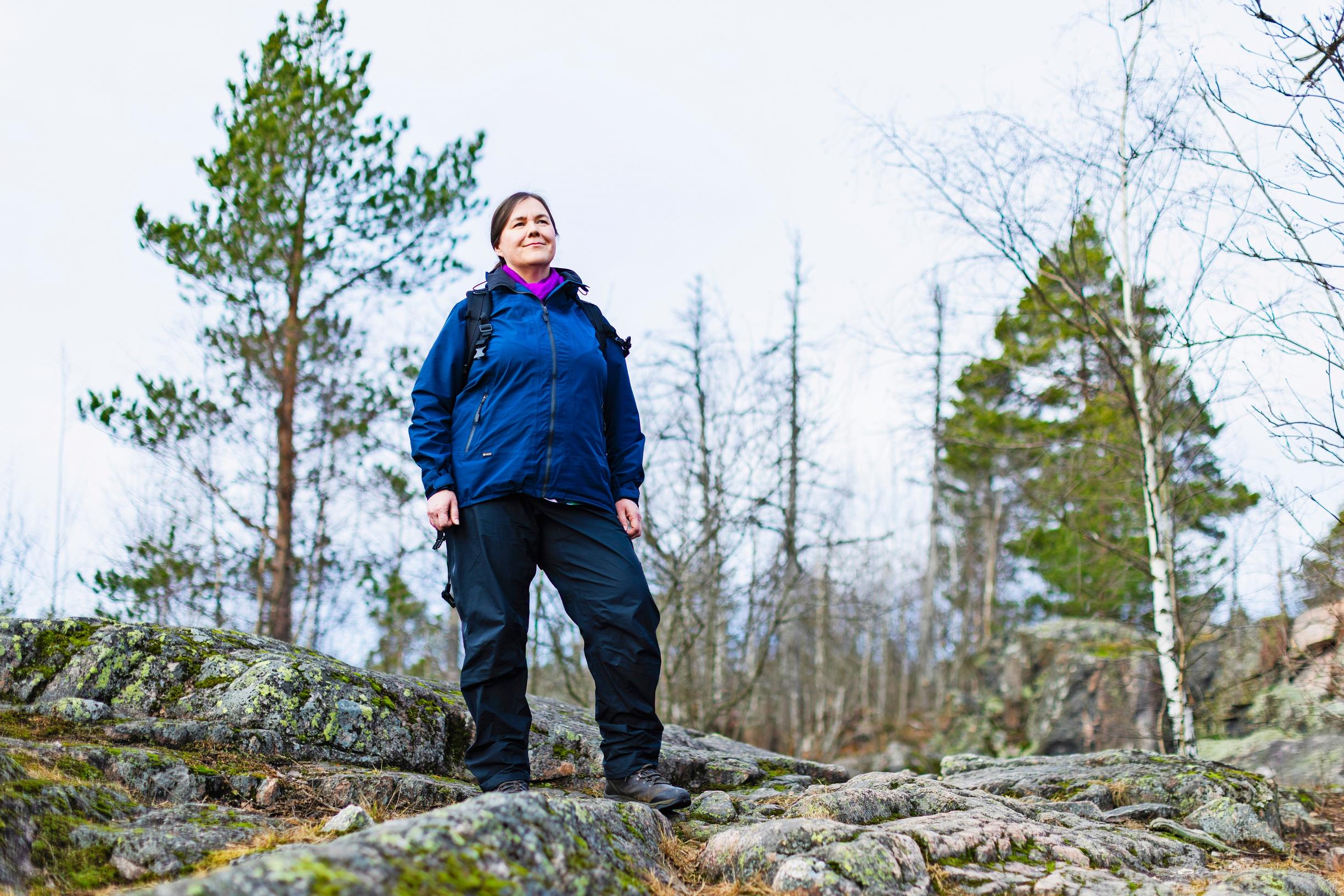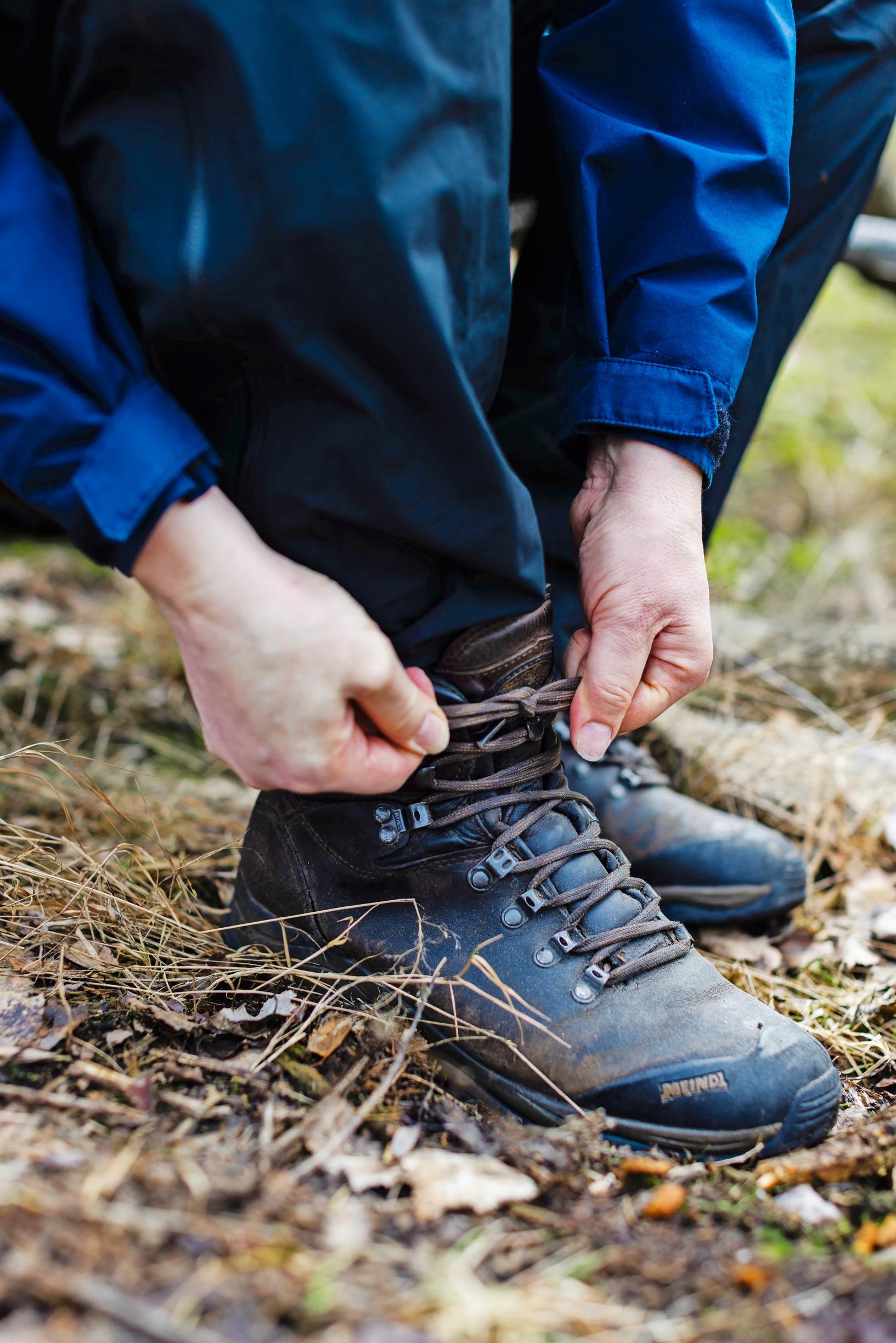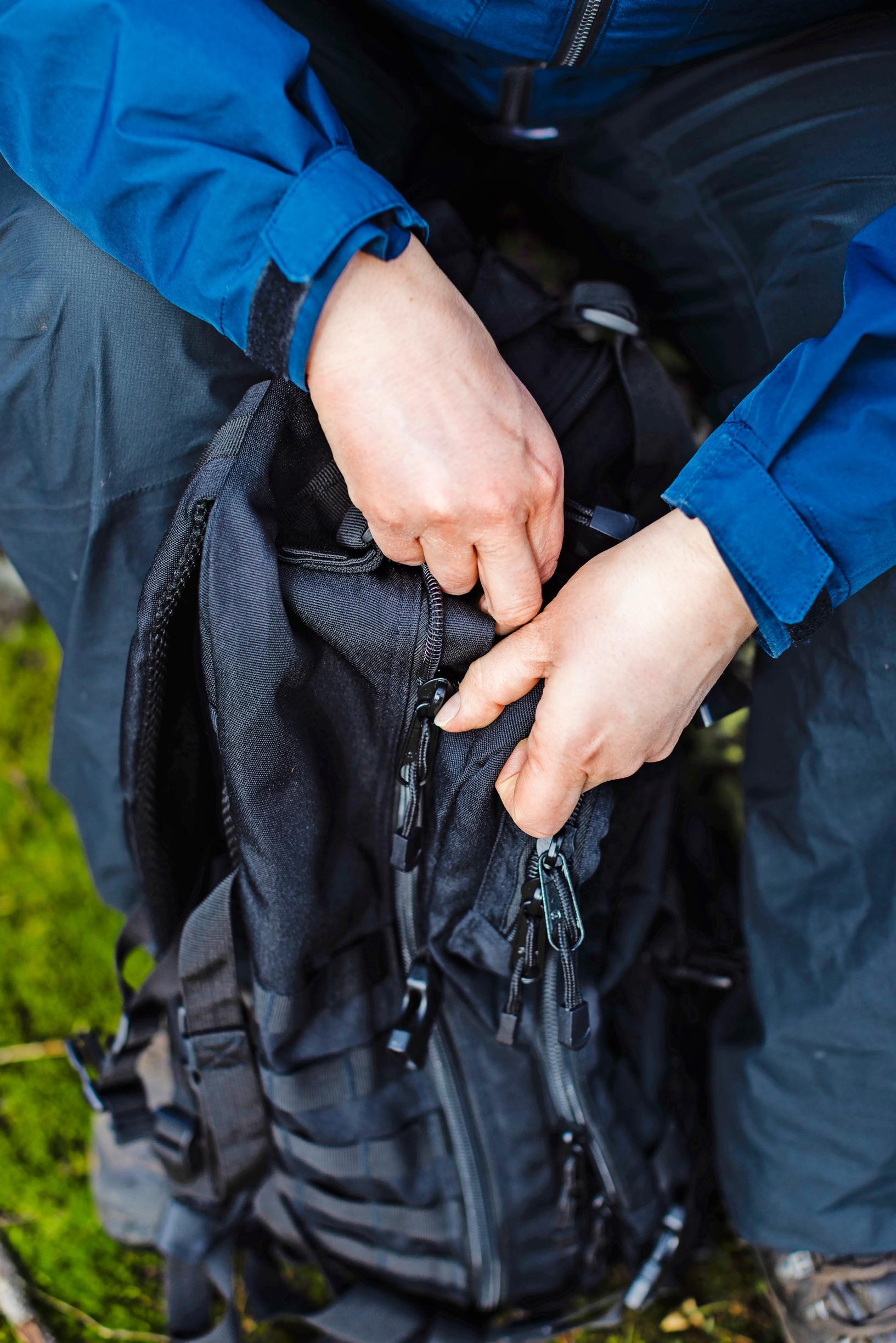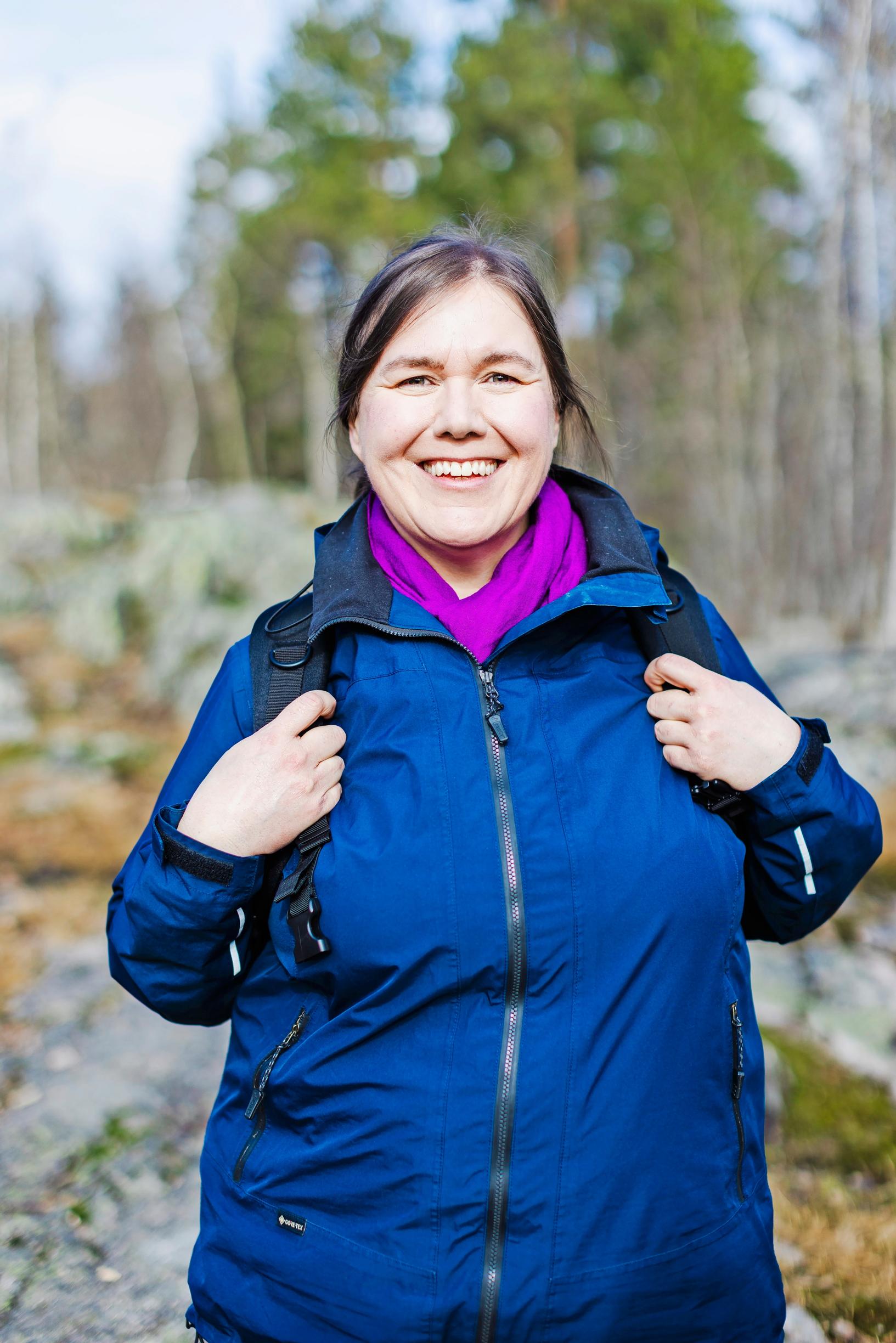
Anna took up solo hiking in midlife: “I’m delighted every time I realize I can handle it on my own”
Every summer, Anna Koikkalainen hikes alone in Lapland’s fells. Hiking has shown her there is more than one way to be physically active.
It’s like connecting with the universe in a way words can’t fully describe. That’s often how it feels for Anna Koikkalainen when she sits alone on a fell slope. There’s nothing man-made nearby—just forests, fells, bogs, and lakes.
“I’m surrounded by a vast space where all I see is nature and its beauty.”
Often these magical moments come after days of trekking through the wilderness alone with her thoughts, without the company of others.
“At those times, I feel like I’m part of nature in a special way. My mind is filled with the awareness that my everyday world is far away, and I’ve managed to slip free from it.”
When Anna ventures into the mountains on her own, she says she becomes more attuned to nature—the birdsong, the babbling streams, and the subtle shifts in the weather.
“When I hike alone, I feel closer to nature than I do with someone else around.”


Anna, who works as a civil servant at the Ministry for Foreign Affairs, became a solo hiker by chance in the summer of 2017. She had already fallen in love with Lapland’s fell scenery and planned two treks for the summer. She headed out in August with a friend, but no one was available to join her first trip in June.
“I’d thought about whether I dared try hiking on my own, but the idea felt exciting. I started planning the trip, thinking about how I could do it as simply as possible.”
She knew exactly what could go wrong. What if she sprained her ankle in the wilderness? How long would it take to get help? What if she fell while crossing a river and got carried away by the current?
Anna picked Pyhä-Luosto National Park in Lapland because the 30-kilometer route was popular and the trails were well marked. If she needed help, other hikers would also be around.
“I wanted a gentle environment so I could calmly test if solo hiking suited me and if I could handle it.”
Anna says she’s always enjoyed her own company and has done a lot of solo traveling, including Interrail trips across Europe.
“I’ve always felt comfortable being alone and doing things on my own, but my biggest worries were staying on the trail, finding a good place to sleep, and handling the weather changes.”
“You need to pace your hike and remember to rest, sometimes even two days a week. Ususally, it’s on the second day that your body needs the most rest.”
After nearly a week of trekking, Anna realized how important it had been to have someone to talk to. Even though she considered herself experienced, tiredness showed as moments of distraction.
On a hot day, she ran out of drinking water after hiking for hours.
“I started melting a small patch of snow with my camping stove and got stuck on the idea that I was out of water.”
A bit later, another hiker passed by and pointed out a stream nearby.
“It was obvious, but I had missed it because I was so exhausted.”
Anna realized that fatigue can sneak up on you when there’s nobody around to share concerns with.
The rest of the trek went well, and a week later Anna finished her route. That's when she knew she’d found her calling. The next summer, she headed out alone right away, without inviting anyone along.
This summer will be the eighth time Anna goes solo in Lapland. Over the years, she’s learned a lot about herself and about hiking alone.
She wrote a book based on her experiences. Anna’s debut Yksinvaeltaja—Mitä olen oppinut tunturissa came out in March.
Anna believes one of her biggest revelations is the importance of fulfilling basic needs, like proper rest, hydration, and nutrition. It’s easy to forget about these things when you’re alone.
“You need to pace your hike and remember to rest, sometimes even two days a week. Usually, it’s on the second hiking day that your body needs the most rest.”




Anna knows that if a hiker doesn’t eat or drink enough or skips rest, decision-making gets fuzzy. To avoid that, she’s come up with specific measures: she always drinks two deciliters of water whenever she stops.
“I had to set rules for myself, because there’s no one else to remind me about what helps me keep going.”
It’s also important to listen to yourself and your limits. It's good to think about if you feel up to crossing a river or if you might want to rest and try later.
That’s exactly what happened last summer: Anna was planning to cross a river, but couldn’t find a safe spot because she was exhausted. After a day of rest, she spotted a place for crossing.
“I really learned about the importance of rest there, and I’m glad I didn’t push through a dangerous crossing.”
Anna wants to go easy on herself, because when you hike alone, mistakes are unavoidable.
“I’m quick to blame myself for bad decisions. But there’s no point in dwelling on mistakes—it’s better to learn from them and move on.”
Although she plans her route in advance, Anna doesn’t want to see her hike as a performance.
“Still, sometimes I catch myself planning routes that are too long or too difficult. That usually happens before I leave, when I’m sitting on my couch at home feeling good and imagining I can go anywhere.”
Over time, she’s become more sensible about her route planning. At the same time, Anna says she’s learned to be kinder to herself: there’s nothing wrong with changing your plan if you want to.
“I’ve only now started to see I’m actually in decent shape. This is how I like to be active, and I don’t need to hold on to that gym class identity anymore.”
Anna’s PE grade in elementary school was on the lower end of mediocre. “I didn’t fit that era’s fitness ideal, which expected everyone to be a gymnast. Because of that, I assumed well into adulthood that I just wasn’t athletic.”
Over time, hiking has begun to break down that image. Every summer, Anna hikes 50–80 kilometers over the course of a week.
“Even though I never see hiking as a performance, it’s still empowering. I’m delighted every time I realize I can handle it on my own” she says.
“I’ve only now started to see I’m actually in decent shape. This is how I like to be active, and I don’t need to hold on to that gym class identity anymore.”
On the trail, your body won’t hesitate to tell you if you’ve neglected its needs. It can show as stumbling, for example.
“When I’m out in nature, I use my senses differently. In everyday city life, you don’t need to worry if your feet might sink into a swamp or whether you can keep going in your chosen direction.”
Anna thinks that in city life, physical and mental strain are clearly divided.
“In the mountains, the body's and mind's struggles mend together. When I’m there alone, I feel more present in myself somehow.”
Alone, but not lonely. She has never truly felt a gnawing sense of loneliness on her hikes.
“I set off on my own precisely so I can be alone. Solitude is my natural state in the wilderness. I feel like nature, with its birds and trees, is there with me as my friend.”
Any passing loneliness can arrive when she’s tired—maybe at the end of the day after camp is set up and dinner is done. Everything else is taken care of, but she’s still not sleepy, and it might be nice to chat.
A short walk in the midnight sun or reading a book takes care of that. By morning, the feeling is gone, and Anna remembers how much she loves the perfectly silent solitude of the fells.
Hiking alone also brings fears. Anna deals with them before heading out.
“Usually these fears are specific and tied to a tough task, like tricky terrain or crossing water.”
She has spent a lot of time thinking about how to manage new fears.
“I don’t try telling myself I’m not scared; instead, I admit I’m afraid. But I won’t dwell on that feeling—I focus on moving ahead and figuring out where to safely place my next step.”
Anna tries not to let her fears take over. Often, reading a book, brewing tea, or going for a short walk helps.


Technology provides security, too. She keeps her phone in her pack most of the time, mostly checking the weather forecast with it. She also has a satellite tracker to send her coordinates if she needs help.
She often sends her family a message before tackling a river crossing and then confirms later that she made it. She also always brings a GPS device in case she gets lost.
“I still prefer to navigate by map and compass. That helps me get a feel for the land. I don’t want to stare at a screen when I’m in nature.”
That’s it, I’m done. I’m a terrible hiker, and I’ll never go hiking alone again. Anna has thought this countless times when she’s tired—only to change her mind every time.
“I’ve realized that thought is actually a sign of a successful solo hike for me. It’s been a good trip if I end up questioning myself and why on earth I got into this.”
In tough moments, Anna calms herself by breathing deeply and taking a break. Eventually, things find their perspective. Besides, it’s not like you can just stay where you are forever—sooner or later, you have to keep moving.
“There’s something magical about the moments right after a big challenge. Nature seems even more stunning and the scenery more breathtaking. Sometimes you need a little desperation to really see and experience what’s around you.”


